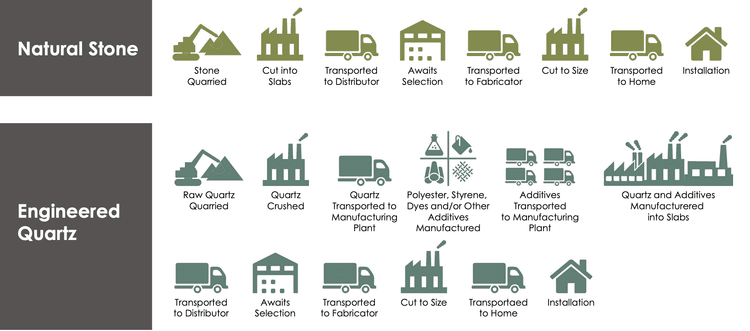
Natural stone vs engineered products
Natural stone is extracted directly from the mountain and processed/cut into final products without changing its natural composition.
Artificial materials or engineered products, such as quartz composite are produced by binding crushed stone particles with glue, resin and other additives. Ceramic slabs and tiles are made by pressing together a variety of minerals and fines under extremely high temperatures.








